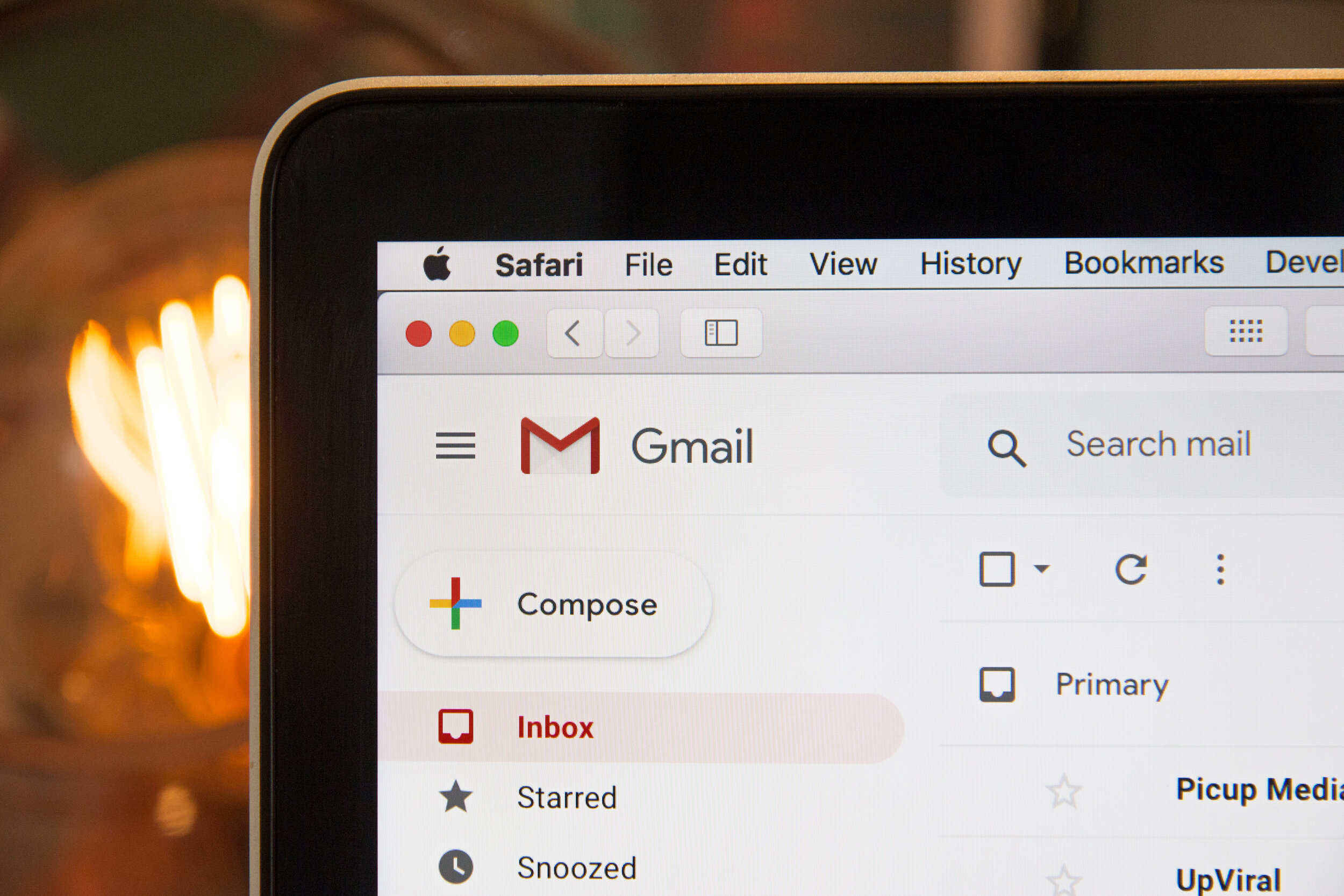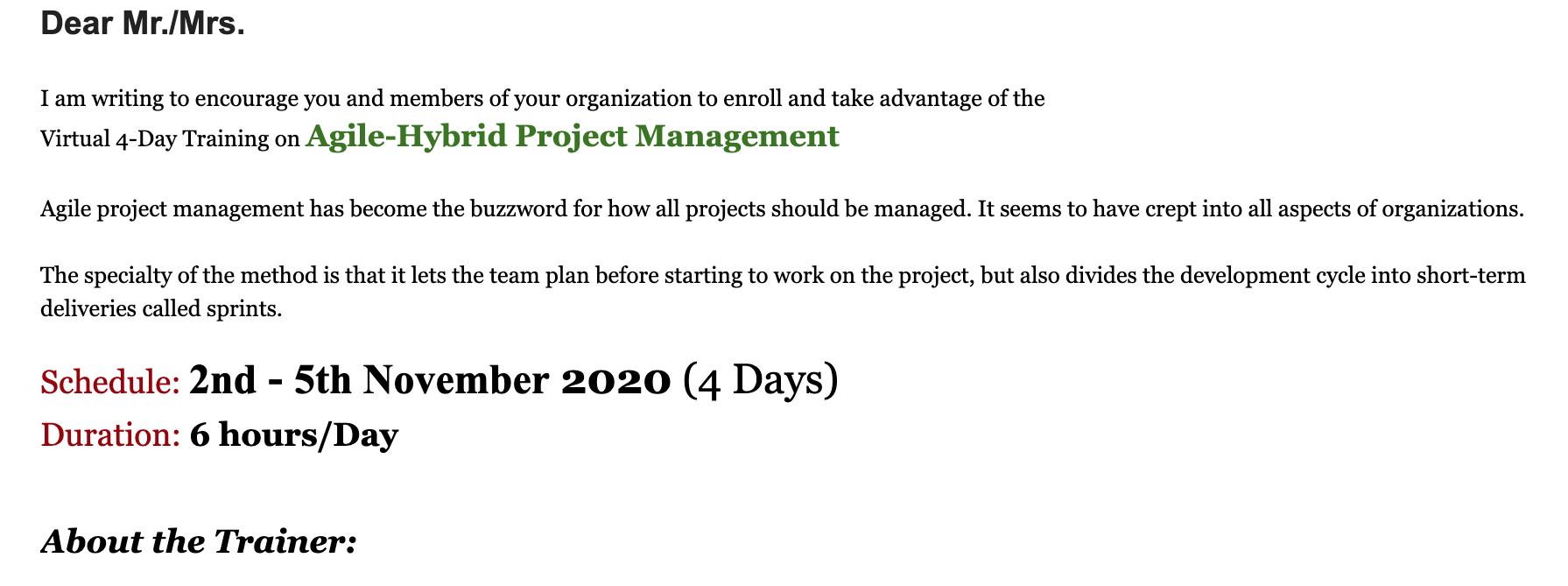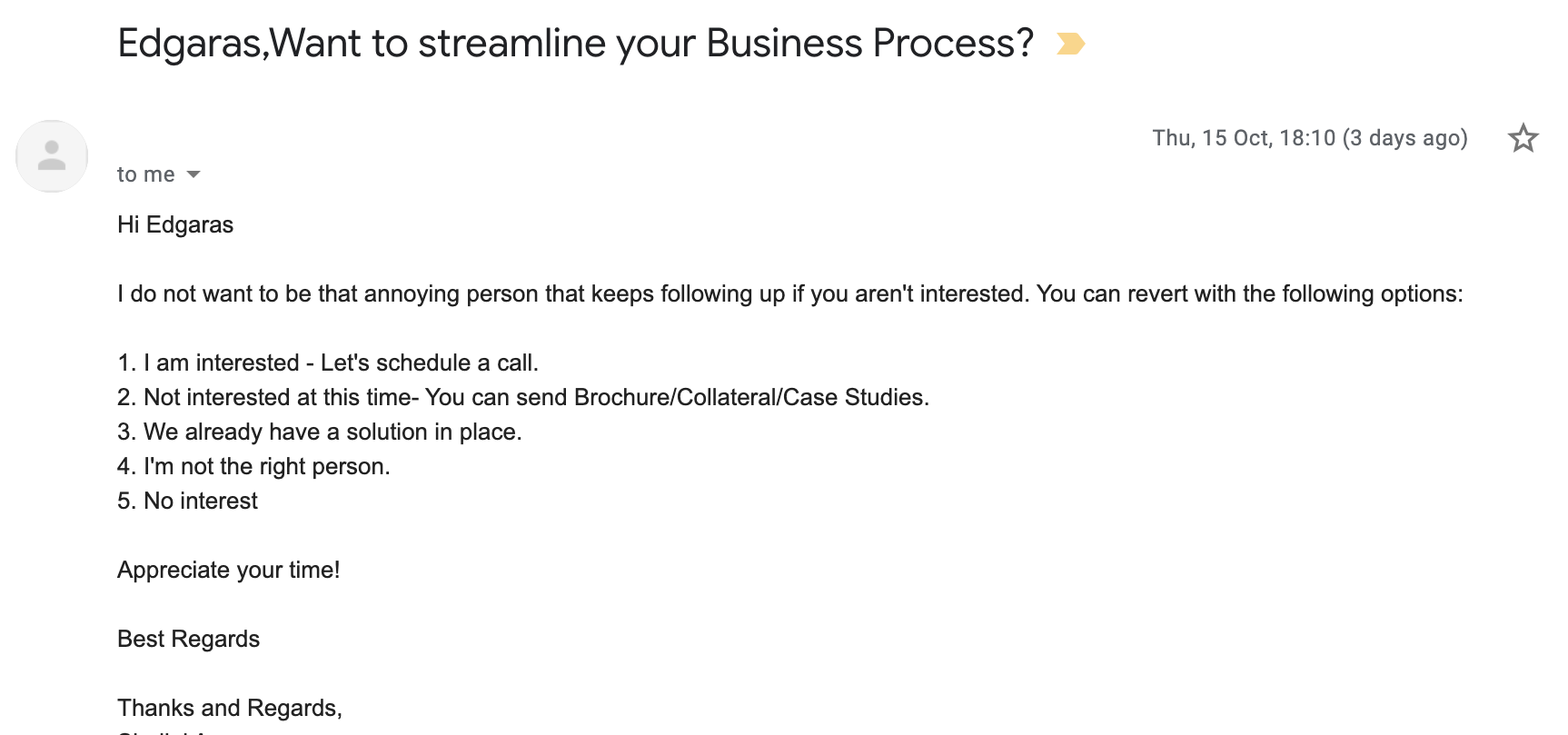I receive tons of emails every day! Some of them wow me, but some have critical mistakes that make me cringe. I normally think about email mistakes and take steps to avoid them. A good written email can be a door opener for business.
According to DMR Business Statistics, we send and receive 121 e-mails every day — that’s about 15 e-mails in an eight-hour working day. Indeed, the number is more significant if a person has more authority and responsibility in an organization.
This is why attracting someone’s attention with an e-mail sales pitch has been becoming harder and harder. Especially nowadays, due to the COVID-19 pandemic, where everyone is desperate to make sales and e-mail remains the most reliable option to engage with your audience.
Every morning I come to the office to at least 40–50 new e-mails. These can be newsletters to publications that I subscribe to, meeting invitations, internal e-mail correspondence, invitations to events, awards or other activities, and some of them are also random sales pitches from other companies that try to offer their solution to my company.
I noticed that COVID-19 had brought more of the sales pitches than usually. No doubt, the easiest way to connect now is via e-mail. Also, many companies lose clients due to budget cuts, and they still need to sustain their business. Thus, they are looking for new clients. All normal, as expected.
However, what is astonishing is the quality of the e-mail sales pitches that I’ve been receiving. By all means, I’m not an expert in pitching, but here are some examples of what to avoid.
Format your e-mail properly
I think it extremely unprofessional when companies send e-mails that aren’t formatted in a clean, visually-appealing manner. Having different font sizes, different colours, italic and bold in one small e-mail text is very busy and looks very unprofessional.
This is an invitation to attend a training on Agile-Hybrid Project Management. Even though I’d be very interested, I will pass, simply because this e-mail looks pretty bad. I would question the quality of the training if a simple e-mail message wasn’t executed well.
I am not even mentioning “Dear Mr./Mrs.” here. Please, do your research about the person who you’re sending the e-mails to and automate your software to include at least their name.
If you wish to emphasize certain aspects of your e-mail, you can use bold or underline feature. If you want to use colour, don’t overdo it — use a colour that blends well with your default e-mail text colour. Avoid harsh and screening colours, such as bright red, neon green, bright orange, etc.
I know it is easy to criticize, so I want to share a template that I think would work better.
Hi [Prospect’s name],
I am [your name], [your position] at [your company]. We’re a [a powerful adjective] company that specializes in [share some of your solutions] to [insert a typical challenge/problem your clients face].
I’m wondering if you might be open to an initial conversation to gauge a fit?
We’ve worked with companies like [insert 2–3 clients here relative to the vertical] to [insert a specific client goal].
If you have a minute or two to learn more about us, you can visit us here at [your website]. I am happy to schedule a call or a meeting with you to discuss further how we can work together.
Thank you.
I am looking forward to hearing from you.
Best wishes,
[Your name]
Know when your e-mail recipient isn’t interested
How many introductory e-mails should you send to make a sale? Well, one is enough. If something that you are selling is required to the recipient, they will make sure to get back to you and enquire more or straight away make the purchase.
It is incredibly irritating to be receiving the same e-mails from the same people about the same products. Often, I choose just to archive the e-mail that wasn’t relevant to me, or I know I won’t purchase service offered.
However, sometimes, the sales agents are very keen and send two or more e-mails following up. I understand sending the second e-mail, because yes, maybe the first one was lost somewhere, but anything above two is excessive.
I recently received an e-mail offering to use some business solution to streamline my business process. The person e-mailed me three times within one week.
It is the third e-mail. I’ll ignore the basic punctuation and formatting mistakes. However, if you need to ask these questions, please know that the recipient isn’t interested and you just seem to be annoying and desperate.
I would love to know how many people actually replied to this e-mail with a 1.
Understand when the recipient isn’t interested. If they haven’t replied, it means they aren’t interested. I don’t answer because I am saving your and my time. Why would I respond to something I am not interested in? Why would I waste your time reading my e-mail? Simple.
In this particular case, I haven’t replied yet because I want to see where the limit for this salesperson is — will I receive the fourth e-mail? If so, what will it be?
Reply to those recipients who showed interest
There are many so-called Medium experts, who run newsletters, online courses, sell their e-books and generate a good income from it. What I’ve noticed is that many of them are only self-interested and won’t engage with you.
There are many authors here, who have newsletters. In their first newsletter, they will ask you to hit the reply button and share about yourself, what issue you’re facing etc. They make an impression and promise to reply to your e-mail. However, do they?
Above is an extract from the e-mail received after subscribing to a newsletter that supposedly had to help me become a better blogger. Well, after I replied to the author, who I follow and read on Medium, I received no response. Sometimes, I just wonder why these gurus want a reply — is it to create a better consumer profile on their CRM software?
If your customer (audience) reply to your first pitch e-mail, do make an effort to foster the connection as it is valuable. Those who reply, they are your loyal audience and potential customers who find your solution interesting.
Other mistakes you shouldn’t make
Some obvious (hopefully) mistakes that you should avoid when pitching via e-mail:
-
Check your grammar, spelling and punctuation — it goes without saying, poor writing won’t land you any sales. Grammarly is a perfect tool to avoid embarrassment and boost your professionalism.
-
Address the person — don’t send “Dear Sir or Madam” e-mails (unless someone has a unique name — Sir or Madam). You show that you didn’t do your homework and didn’t know the person who you were e-mailing. LinkedIn can help to find the best person in the company.
-
Be specific in your e-mail title — give a concise summary of what your e-mail is about. Titles like “Schedule meeting”, “no title”, “Hello!”, “A business solution you need”, etc. are ew.
-
Don’t CC the entire address book in one e-mail — if you really have to send a non-personalized e-mail, don’t cc all recipients! The number of times I received the whole address book of someone is crazy! (Once from a bank!!!) When you cc, the recipient can see everyone who received the same e-mail — a huge turn-off. If you have to (and only if you really really have to) use bcc feature, the recipients won’t be able to see who else received your e-mail.
-
Don’t be desperate — if you received a response that someone isn’t interested in what you have to offer, don’t expect them to change their mind next week or month. Continuous e-mailing asking if something changed is also a turn-off and can be seen as desperation.






